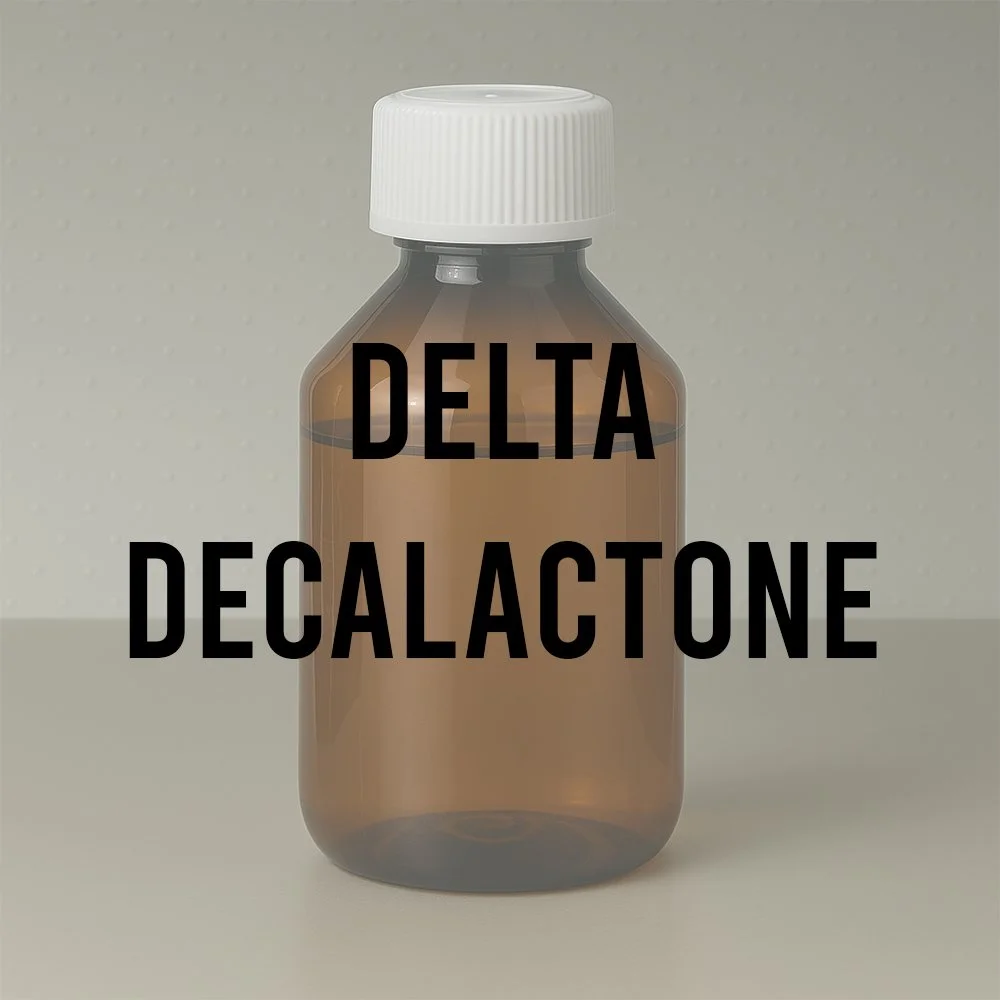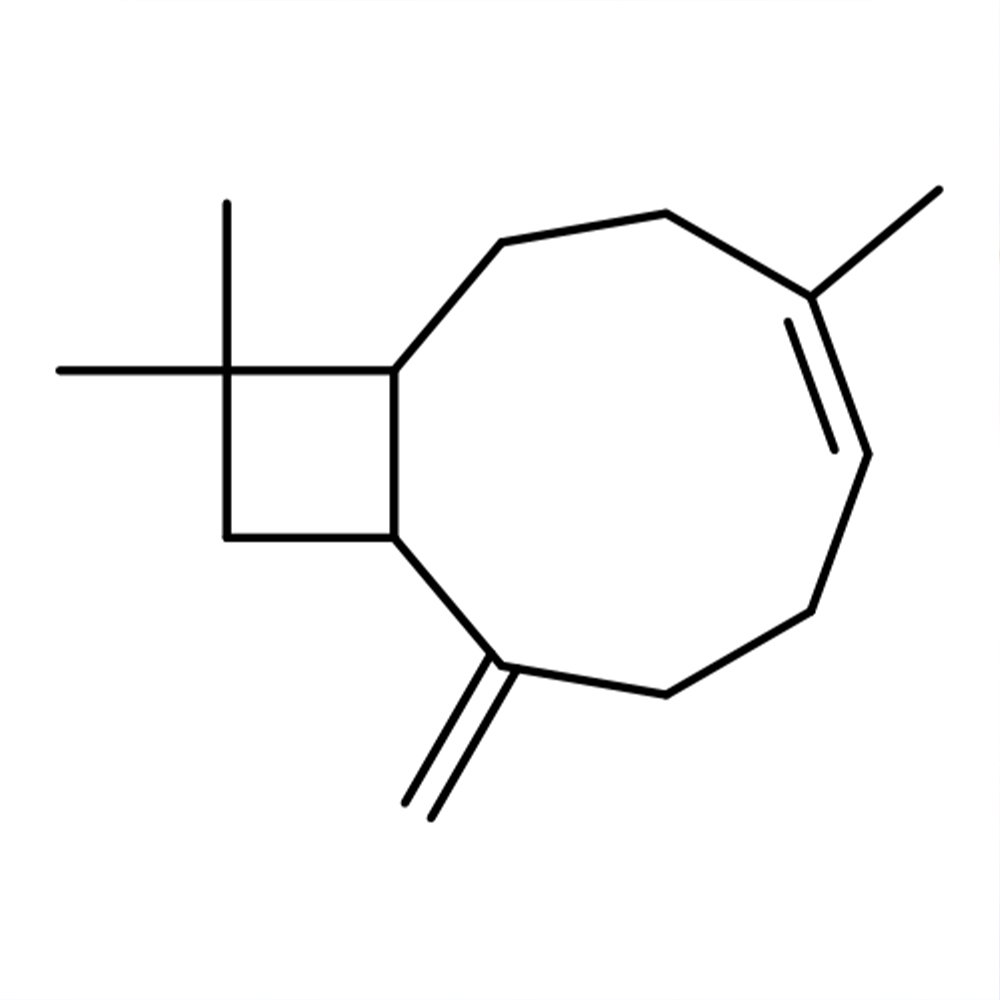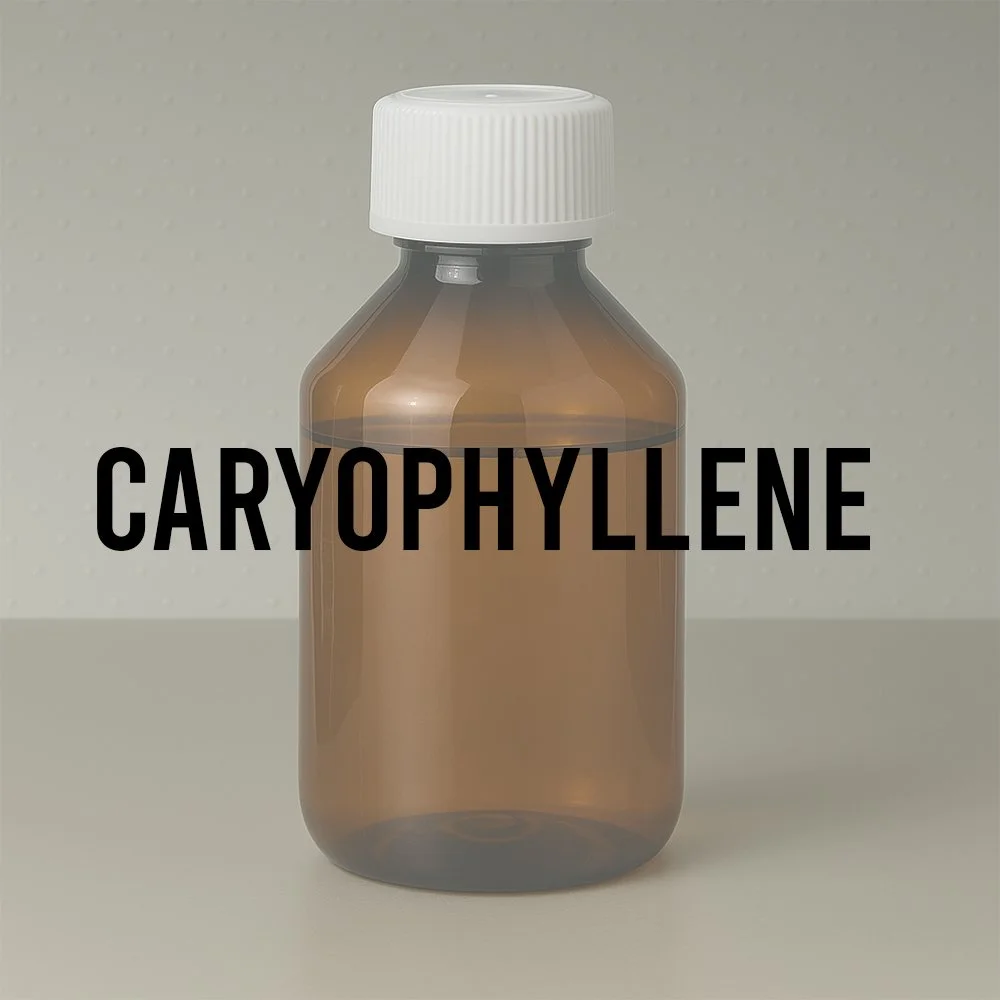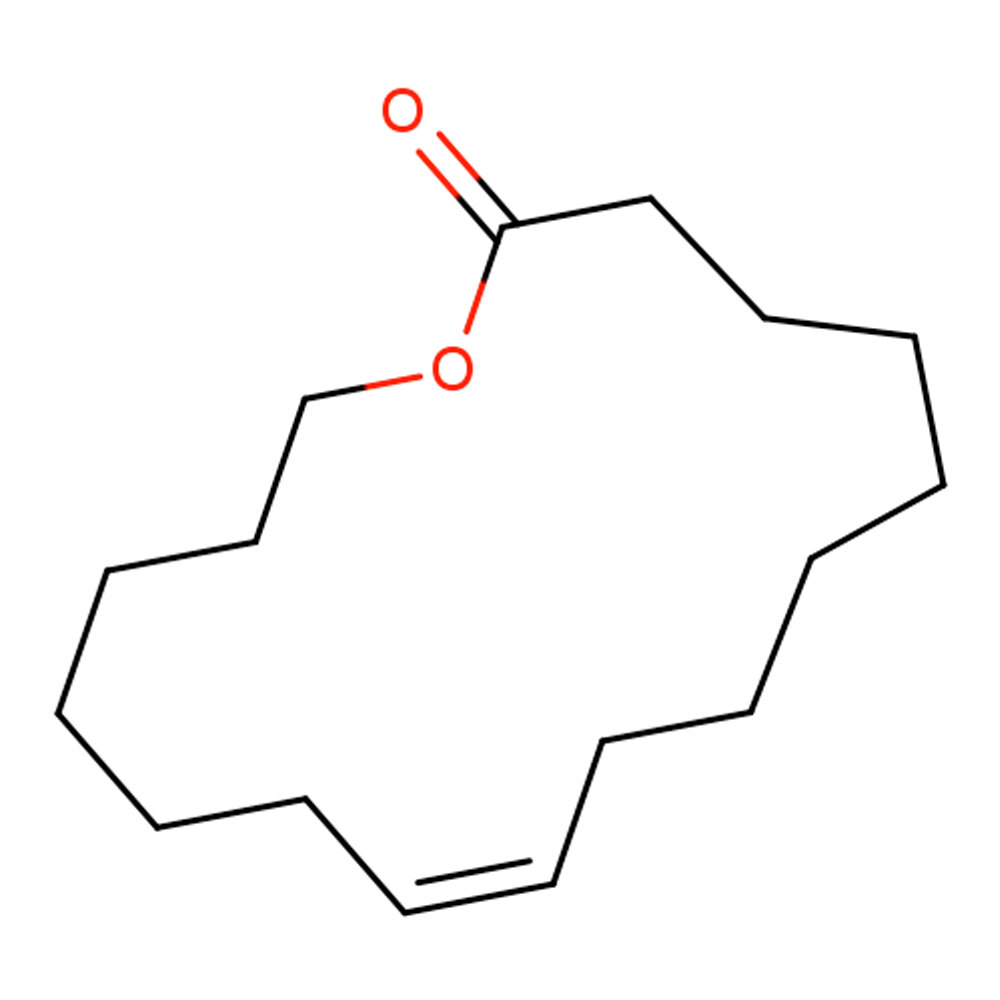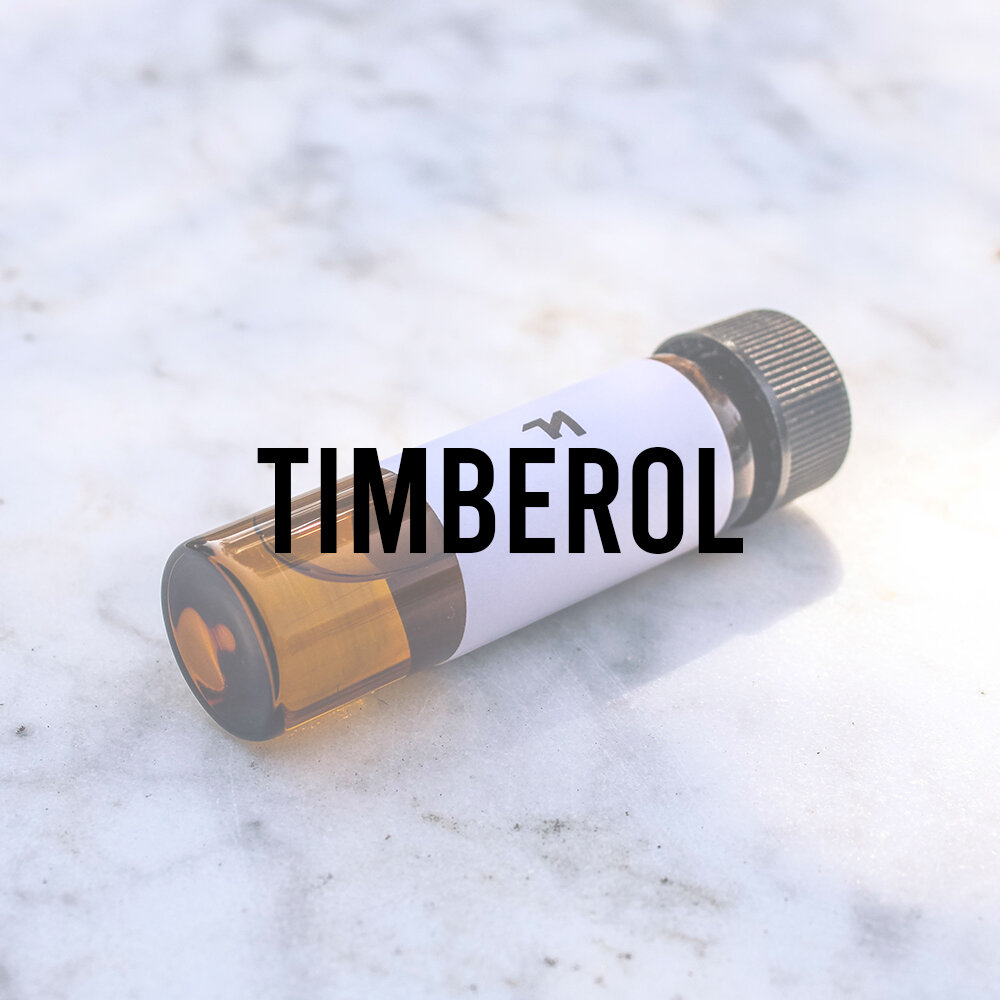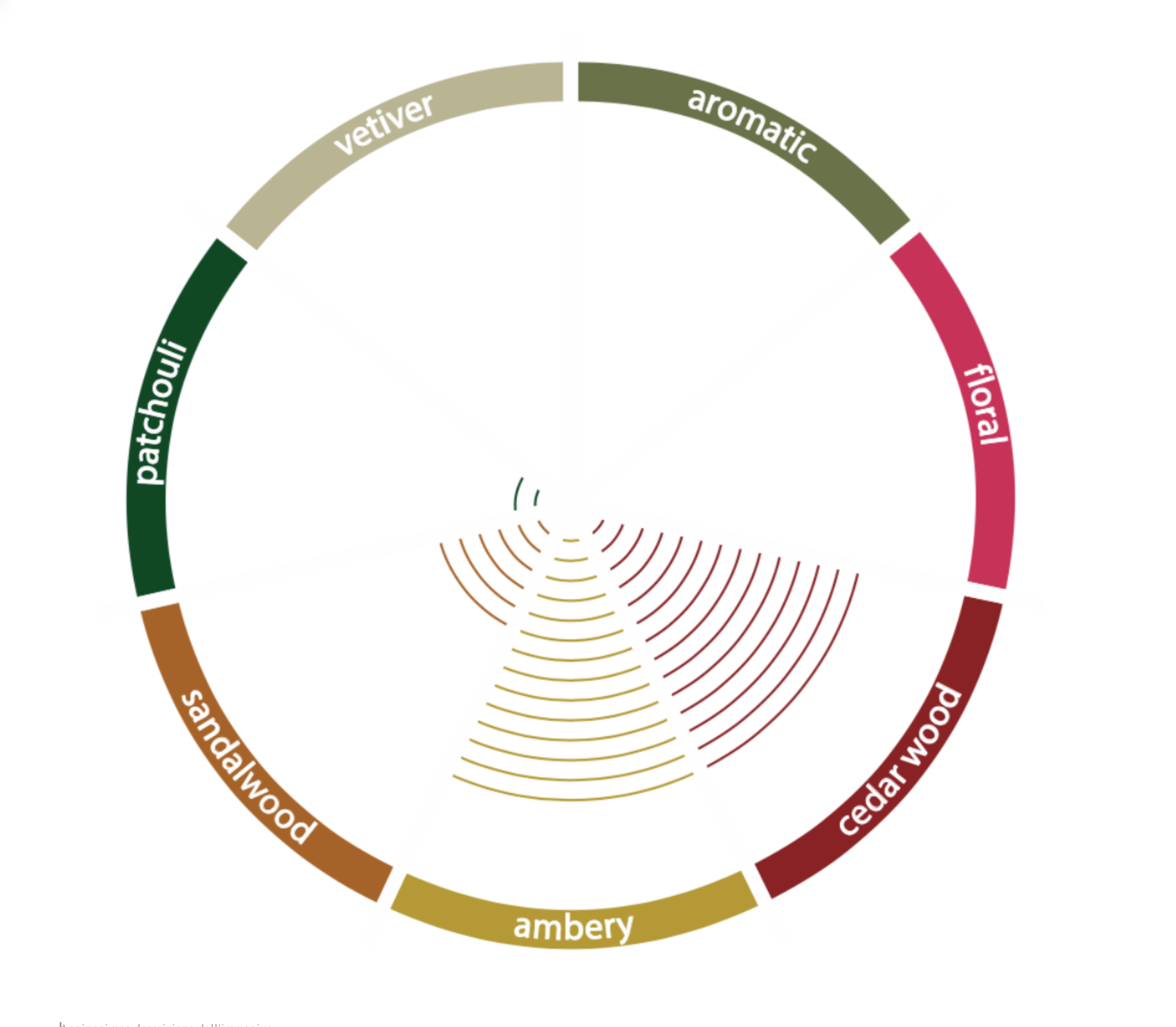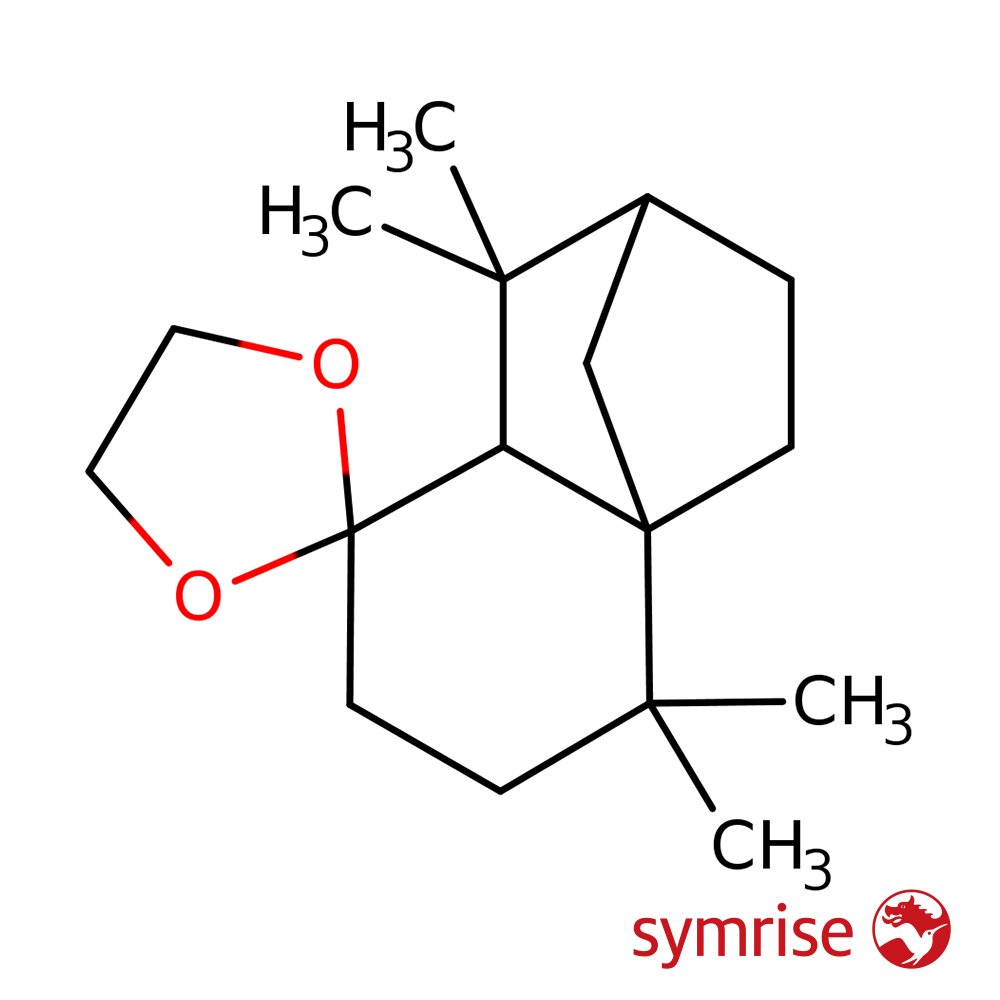Delta-Decalactone (CAS 705-86-2) Technical Ingredient Overview
🔎 Chemical Name — 6-Pentyloxan-2-one (IUPAC); 5-Decanolide; δ-Decalactone
🧪 Synonyms — 5-Decanolide, Decano-1,5-lactone, Amyl-δ-valerolactone, 6-Pentyltetrahydro-2H-pyran-2-one, Decan-5-olide, δ-Caprinolactone
📂 CAS Number — 705-86-2
📘 FEMA Number — 2361
⚖️ Molecular Weight — 170.25 g/mol
📝 Odor Type — Fruity-lactonic, coconut
📈 Odor Strength — Very powerful and persistent; easily underestimated
👃🏼 Odor Profile — Intensely coconut-like with creamy, sweet, milky, and buttery nuances. Displays fruity undertones reminiscent of peach nectar and nectarine, alongside subtle herbal and nutty facets. The S-enantiomer exhibits a nutty odor with fruity undertones, while the R-enantiomer contributes to the warning scent of North American porcupines
⚗️ Uses — Essential in coconut reconstitutions; adds fruity and milky effects to sandalwood and fruity compositions; employed in dairy flavor formulations, peach accords, and gourmand bases; enhances creamy warmth in tropical, lactonic, and white floral structures; functions as a high-tenacity fixative
🧴 Appearance — Colorless to pale yellow clear liquid
What is Delta-Decalactone?
Delta-Decalactone (also known as δ-Decalactone, 5-Decanolide, or Decano-1,5-lactone) is a six-membered, 10-carbon cyclic monoester (lactone) that generally exists in two isomeric forms, R- and S- (Sigma-Aldrich, 2025). This versatile aroma chemical is classified as a lactone that naturally occurs in fruit and milk products in traces (Wikipedia, 2024), though commercial material for perfumery and flavoring is exclusively synthetic. Chemically, it belongs to the δ-lactone family, characterized by a six-membered ring structure with an ester functional group.
As a chiral molecule, the compound possesses one asymmetric carbon center, resulting in two enantiomers with distinct olfactory properties: the S-enantiomer has a nutty odor with a fruity undertone, while the R-enantiomer is the main component of the warning stench of the North American porcupine (Wikipedia, 2024). In perfumery applications, the racemic mixture (equal parts of both enantiomers) is most commonly employed for its balanced coconut-creamy character.
Delta-Decalactone is distinguished from its constitutional isomer, Gamma-Decalactone, by having one less carbon atom in its ring and one additional carbon in its side chain. This structural difference results in a pronounced coconut character for δ-Decalactone, whereas γ-Decalactone exhibits a more peachy-sweet profile. For perfumers seeking authentic coconut notes, δ-Decalactone is the industry-standard ingredient, outperforming natural coconut extracts in both intensity and consistency.
Historical Background
The discovery and isolation of δ-Decalactone are intimately linked to dairy chemistry research conducted in the 1950s, representing a pivotal moment in flavor science and food chemistry. The coconut-like off-flavor compound, which develops in butter oil during storage or when heated, was isolated and identified as δ-decalactone (the lactone of 5-hydroxy decanoic acid) by P.G. Keeney and Stuart Patton (Keeney & Patton, 1956). This groundbreaking work was authorized for publication in October 1955 in the Journal Series of the Pennsylvania Agricultural Experiment Station, marking the first definitive identification of this important flavor compound.
Infrared spectroscopy and paper chromatography were used in establishing the flavor compound's coidentity with δ-decalactone (Keeney & Patton, 1956), representing cutting-edge analytical techniques for the era. Delta-C10 and delta-C12 lactones were linked with the characteristic coconut aroma in milk-based products by Tharp and Patton in 1960 (Schütt et al., 2007), establishing the scientific foundation for understanding lactone chemistry in dairy applications. Patton, Keeney, and Herald also investigated the role of lactones in flavor deterioration of milk fat in 1954 (Patton et al., 1954), establishing the scientific foundation for understanding these compounds in dairy products and opening new avenues for both flavor correction and intentional flavor creation.
The compound is found naturally in sherry, white wine, mango, cassava, loganberry, and fresh plum (Sigma-Aldrich, 2025), though perfumery applications rely entirely on synthetic production due to the impracticality of natural extraction. Industrial synthesis became economically viable in the mid-to-late 20th century with the development of the Baeyer-Villiger oxidation process, enabling widespread use in both flavor and fragrance applications. Today, δ-Decalactone is recognized as an essential ingredient in the perfumer's palette, particularly for creating tropical fruit accords, coconut reconstructions, and creamy gourmand compositions.
Olfactory Profile
Scent Family: Fruity-Lactonic (Coconut subfamily)
Main Descriptors: Fruity, coconut, peach, herbal character with soft, stable, blooming, and aggressive nuances (ACS International, 2024). The material presents an intensely coconut-like aroma with creamy, milky sweetness that immediately evokes tropical destinations, sunscreen, and coconut-based desserts. Supporting characteristics include nutty (reminiscent of toasted coconut), celery-like (green-watery facets), and subtle herbaceous undertones that add naturalism and complexity to the overall impression. Advanced perfumers note additional nuances of nectarine skin, condensed milk, and butter cream that emerge during dry-down evaluation.
The olfactory character can be described across multiple dimensions:
Tropical-Fruity: Dominant coconut flesh, coconut water, coconut cream
Creamy-Dairy: Fresh milk, condensed milk, butter, vanilla ice cream
Stone Fruit: White peach nectar, nectarine, apricot kernel
Nutty: Toasted coconut, macadamia, almond milk
Green-Watery: Subtle celery water, green coconut, tropical humidity
Intensity: Very powerful and highly substantive—one of the most potent aroma chemicals in the perfumer's palette. The material is easily underestimated due to its extreme potency, requiring careful dosing in formulations. Even trace amounts (0.001-0.01%) can significantly impact a composition's character. Dosage in flavors up to 20 ppm in finished consumer product; dosage could reach up to 8% in fragrance compounds (ACS International, 2024), though most fine fragrance applications employ 0.1-2% for optimal balance.
Tenacity: Exceptional longevity—one of very few materials that can compete with synthetic musks for persistence. The material exhibits multi-day retention on blotters and fabric, with detectable presence extending well beyond 100 hours (4+ days). On skin, the creamy-coconut character remains perceptible for 24-48 hours, making it an excellent fixative for volatile tropical top notes. In fabric care applications, δ-Decalactone can provide lasting fragrance for weeks after washing, contributing to the "long-lasting freshness" claim on many commercial products.
Volatility: Low to medium volatility with a complex evaporation profile. Functions primarily as a heart-to-base note material, though its diffusive coconut character can be perceived relatively early in the evaporation curve due to its high odor impact. The compound's vapor pressure is approximately 0.001 mm Hg at 20°C, with a boiling point of 281°C at atmospheric pressure. This low volatility ensures the material remains present throughout all fragrance stages, from initial spray to final dry-down, continuously contributing its creamy-tropical signature.
Diffusion & Radiance: Excellent diffusion properties despite its relatively low volatility. The powerful odor impact creates a noticeable olfactory radius even at low concentrations. In room temperature air, δ-Decalactone projects well, making it ideal for creating tropical, inviting atmospheres in retail environments, spas, and hospitality settings. The radiant coconut-creamy character draws attention without overwhelming, creating positive emotional associations with warmth, vacation, relaxation, and indulgence.
Fixative Role: Acts as a powerful fixative due to its low volatility and high molecular weight (170.25 g/mol). Extends the life of more volatile fruity and floral notes (citrus, berry, green apple, tropical fruits) while contributing its own distinctive coconut-creamy signature throughout the fragrance's development. Particularly effective at "holding" ethereal tropical fruit notes (mango, papaya, passion fruit) that would otherwise dissipate quickly. The lactonic structure also helps bind and smooth disparate elements in a composition, creating seamless transitions between top, heart, and base notes.
Applications in Fine Fragrance
Delta-Decalactone plays a crucial role in perfumery as a high-impact fruity-lactonic material with exceptional versatility across multiple fragrance categories. Its unique ability to bridge tropical, creamy, and milky facets makes it indispensable for both niche and commercial perfumery:
Coconut Reconstitutions & Tropical Accords: The primary application, providing the most authentic coconut-like character among commercially available lactones. Essential for creating realistic coconut fragrances, piña colada accords, and tropical vacation-inspired scents. When combined with coconut aldehyde and other supporting materials, δ-Decalactone forms the backbone of sunscreen-reminiscent fragrances and tropical body care products. Its creamy sweetness evokes sun-drenched beaches and exotic destinations, making it a favorite in summer fragrance launches.
Tropical Fruit Accords & Stone Fruit Enhancement: Enhances peach, mango, nectarine, papaya, and apricot compositions with creamy milky depth that increases perceived juiciness and naturalness. Works synergistically with peach aldehydes, fruity esters (ethyl butyrate, isoamyl acetate), and other lactones to create multi-dimensional tropical fruit profiles. Particularly effective in smoothie-inspired fragrances, fruit sorbet accords, and exotic fruit salad reconstructions where creamy body is essential.
White Floral Enhancement & Volume Building: Adds substantial volume and creamy texture to gardenia, tuberose, jasmine, magnolia, and frangipani structures. The lactonic character softens sharp indolic notes while contributing a sun-warmed, tropical quality to white flower compositions. Perfumers use δ-Decalactone to create the impression of flowers in their native tropical habitat, surrounded by creamy coconut and ripe fruit. Essential in modern white floral perfumes that emphasize warmth and sensuality over classical green freshness.
Gourmand Compositions & Dessert Fragrances: Contributes milky-vanilla warmth to dessert-inspired fragrances alongside vanillin, ethyl maltol, caramel notes, and praline accords. Creates the distinctive "tres leches cake," "coconut cream pie," and "vanilla ice cream" effects in contemporary gourmand perfumery. Particularly valuable in layering fragrances and body care products where edible, comforting sweetness is desired. Pairs beautifully with chocolate notes, coffee absolutes, and caramelized sugar accords.
Sandalwood Modifiers & Woody-Oriental Bases: Brings fruity-milky effects that soften and naturalize synthetic sandalwood materials (Javanol, Ebanol, Sandalore). Creates the impression of sandalwood incense combined with tropical flowers and coconut milk. Highly effective in woody-oriental fragrances, meditation-inspired scents, and spa product applications where creamy warmth supports the main woody structure.
Lactonic-Musky Accords & Skin Scents: Pairs synergistically with Galaxolide, Habanolide, Globalide, and other polycyclic musks to create sensual, creamy-musky dry-downs that evoke soft skin, clean laundry, and intimate warmth. This combination is fundamental to modern "my skin but better" fragrances, minimalist perfumes, and cosmetic-musky compositions. The lactone softens the sometimes-harsh metallic aspects of synthetic musks while the musks extend the longevity of the lactone's creamy sweetness.
Functional Fragrance Applications: Beyond fine perfumery, δ-Decalactone excels in:
Hair Care: Adds tropical, vacation-like character to shampoos and conditioners
Body Care: Creates indulgent, dessert-like experiences in lotions and shower gels
Fabric Care: Provides long-lasting creamy softness in fabric softeners and detergents
Home Fragrance: Essential in coconut-vanilla candles, tropical reed diffusers, and beach-inspired air fresheners
The material is particularly valued for adding a "coconut cream" or "condensed milk" effect that bridges fruity top notes with creamy base materials. It works exceptionally well with Delta-Dodecalactone, Gamma-Undecalactone, and Gamma-Nonalactone in complex lactonic structures that define modern fruity-floral and gourmand perfumery.
Performance in Formula
Behavior in Blends: Delta-Decalactone demonstrates excellent solubility in alcohol and non-polar solvents. It is readily incorporated into both alcoholic perfumes and oil-based applications without phase separation issues. The material exhibits stable performance across pH ranges from 4 to 10.
Impact on Overall Composition: Even at low concentrations (0.01-0.5%), δ-Decalactone significantly impacts fragrance character, adding creamy volume and tropical warmth. At higher concentrations (1-8%), it dominates the composition with its powerful coconut signature. The material enhances diffusion and bloom while providing substantial longevity.
Compatibility: Compatible with most fragrance materials, including esters, aldehydes, musks, ionones, and other lactones. Shows strong synergistic effects when combined with peach bases, vanillic materials, and tropical fruit notes. Avoid excessive use with intensely green or marine notes, as the creamy-sweet character may clash.
Stability Considerations: Lactones tend to polymerize through time, making them more viscous and leading to a phase shift in alcohol. Proper storage in cool, dark conditions and use of antioxidants can mitigate degradation. The material is stable to heat processing up to 180°C, making it suitable for functional fragrance applications.
Industrial & Technical Uses
Flavor Industry: Delta-Decalactone is excellent for all creamy, milky and coconut flavors. It also lends creamy, milky notes to peach, mango and other fruity aromas (ACS International, 2024). It is approved under FEMA 2361 with JECFA Number 232 (FEMA, 2025), and appears on the FDA's Generally Recognized as Safe (GRAS) list under 21CFR172.515 (FEMA, 2025).
Functional Fragrance: Employed in household products, personal care formulations, and fabric care applications for its creamy, tropical character. The material's stability and substantivity make it particularly suitable for detergents, fabric softeners, and body care products where long-lasting coconut notes are desired.
Technical Specifications:
Density: 0.954 g/mL at 25°C
Refractive index: n₂₀/D 1.456-1.462
Melting point: -27°C
Boiling point: 117-120°C at 0.02 mmHg (reduced pressure)
Regulatory & Safety Overview
IFRA Status: This ingredient does not contain any allergen and is not restricted for the 51st amendme. Delta-Decalactone follows IFRA guidelines (Sigma-Aldrich, 2025) and can be used without specific concentration restrictions in fragrance applications. Manufacturers report compliance with current IFRA standards.
EU Cosmetics Regulation: EU Regulation 1223/2009 compliant; meets EU Regulation 1334/2008 & 178/2002 standards (Sigma-Aldrich, 2025). The material is not listed among the 26 declarable allergens under Annex III of the EU Cosmetics Regulation, therefore does not require specific labeling on finished products.
FEMA Status: FEMA Number 2361; JECFA Number 232; CFR 21CFR172.515 (FEMA, 2025). Recognized as Generally Recognized as Safe (GRAS) for use in food products at appropriate levels.
GHS Classification: Low hazard profile. May cause mild skin irritation in concentrated form. Standard industrial hygiene practices should be observed during handling.
Toxicology: Adams et al. (1998) conducted the FEMA GRAS assessment of lactones used as flavor ingredients (FEMA, 2025), published in Food and Chemical Toxicology (Volume 36, page 249). The compound exhibits low acute toxicity and is not classified as a sensitizer under normal usage conditions. The compound has been shown to be potent inducers of liver enzymes such as cytochrome P450 and glutathione reductase in Sprague-Dawley rats (Biosynth, 2025) in toxicological studies, though these effects occur at concentrations far exceeding typical human exposure levels.
Additional Regulatory Notes:
Council of Europe number: 621; EC Number: 211-889-1; Flavis number: 10.007 (Sigma-Aldrich, 2025)
Meets purity specifications of JECFA (Sigma-Aldrich, 2025)
Kosher certified and Halal suitable (ACS International, 2024) from multiple suppliers
REACH registered in the European Union
Synthesis & Production Methods
Chemical Synthesis: Chemically, it is produced from Baeyer–Villiger oxidation of delfone (2-pentylcyclopentanone) (Wikipedia, 2024). Delta-Decalactone can be prepared by oxidation of 2-pentylcyclopentanone, using a perac. This classical synthetic route employs peroxyacids such as meta-chloroperbenzoic acid (mCPBA) or performic acid to convert the cyclic ketone to the corresponding lactone through carbon-oxygen bond insertion.
The Baeyer-Villiger oxidation mechanism involves:
Nucleophilic attack of the peroxyacid on the carbonyl carbon
Formation of the Criegee intermediate
Migration of the alkyl group with concurrent C-O bond formation
Elimination of the carboxylic acid byproduct
Biotechnological Production: From biomass, it can be produced via the hydrogenation of 6-pentyl-α-pyrone (Wikipedia, 2024). Emerging biotechnological methods utilize microbial fermentation and enzymatic conversion of fatty acid precursors, offering more sustainable production routes. Lactic acid bacteria (LAB) have been shown effective in formation of dairy flavor inducing δ-lactones from grapeseed oil as a substrate (ScienceDirect, 2022), with sub-lethal heat stress significantly improving lactone production yields.
Industrial Scale Production: Commercial synthesis typically employs continuous-flow Baeyer-Villiger oxidation using hydrogen peroxide and transition metal catalysts, optimized for high yield and selectivity. The racemic mixture is most commonly produced, though enantioselective synthesis routes are available for specialized applications.
Natural Occurrence & Biosynthesis
Delta-Decalactone is the main flavor compound found in nonfat dry milk, evaporated and dried whole milk (Sigma-Aldrich, 2025). It is reported to be responsible for the coconut-like off-flavor in fat-containing dairy products (Sigma-Aldrich, 2025) when present at elevated concentrations. Natural occurrence includes sherry, white wine, mango, cassava, loganberry and fresh plum (Sigma-Aldrich, 2025).
Fresh, raw milk fat contains lactone precursors consisting of hydroxy triglycerides, which upon hydrolysis at 140°C for 30 minutes result in the production of a series of saturated delta lactones of even-numbered chain lengths from 8 to 18 carbon atoms (ScienceDirect, 2010). This biosynthetic pathway explains the formation of δ-Decalactone during thermal processing of dairy products.
In fruit matrices, the compound develops during ripening through enzymatic oxidation and lactonization of hydroxy fatty acids. However, natural extraction is commercially unviable due to extremely low concentrations and the complexity of isolation procedures.
References
ACS International. (2024). Decalactone delta product specification. https://acsint.biz/products/decalactone-delta/
Adams, T. B., Greer, D. B., Doull, J., Munro, I. C., Newberne, P. M., Portoghese, P. S., Smith, R. L., Wagner, B. M., Weil, C. S., Woods, L. A., & Ford, R. A. (1998). The FEMA GRAS assessment of lactones used as flavor ingredients. Food and Chemical Toxicology, 36, 249-278.
Arctander, S. (1969). Perfume and flavor chemicals (aroma chemicals). Self-published.
Biosynth. (2025). δ-Decalactone [FD03008] product information. https://www.biosynth.com/p/FD03008/705-86-2-delta-decalactone
FEMA (Flavor and Extract Manufacturers Association). (2025). Delta-decalactone (FEMA 2361). https://www.femaflavor.org/flavor-library/delta-decalactone
Keeney, P. G., & Patton, S. (1956). The coconut-like flavor defect of milk fat. I. Isolation of the flavor compound from butter oil and its identification as δ-decalactone. Journal of Dairy Science, 39(8), 1114-1119. https://doi.org/10.3168/jds.S0022-0302(56)94825-1
National Center for Biotechnology Information. (n.d.). PubChem compound summary for CID 12810, delta-Decalactone. Retrieved October 8, 2025, from https://pubchem.ncbi.nlm.nih.gov/compound/delta-Decalactone
Patton, S., Keeney, P. G., & Herald, C. T. (1954). The role of lactones in flavor deterioration of milk fat. Science, 119(3085), 218-219. https://doi.org/10.1126/science.119.3085.218
Schütt, B., Moran, N., Schieberle, P., & Hofmann, T. (2007). Sensory-guided identification of creaminess-enhancing volatiles and semivolatiles in full-fat cream. Journal of Agricultural and Food Chemistry, 55(23), 9634-9645.
ScienceDirect. (2010). Lactone precursor in fresh milk fat: Isolation and characterization of the precursor. https://www.sciencedirect.com/science/article/pii/S0022030267877129
ScienceDirect. (2022). Biotechnological formation of dairy flavor inducing δ-lactones from vegetable oil. https://www.sciencedirect.com/science/article/pii/S2590157522000189
Sigma-Aldrich. (2025). δ-Decalactone natural, ≥98%, FCC, FG [705-86-2]. https://www.sigmaaldrich.com/US/en/product/aldrich/w236128
TCI Chemicals. (2025). δ-Decanolactone [D1416] product specification. https://www.tcichemicals.com/US/en/p/D1416
Tharp, B. W., & Patton, S. (1960). Isolation and identification of lactones from milk fat. Journal of Dairy Science, 43(4), 475-479.
Wikipedia. (2024, April 22). δ-Decalactone. https://en.wikipedia.org/wiki/Δ-Decalactone

